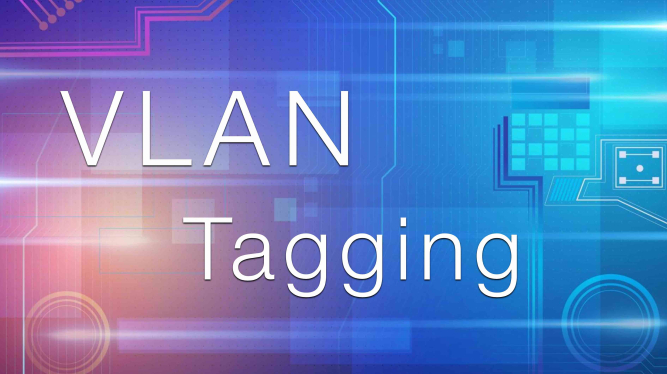
VLAN tagging, sometimes referred to as Ethernet tagging, is a mechanism used in computer networks. It identifies and segregates network traffic into different virtual local area networks (VLANs). By implementing tagging, network administrators can efficiently manage and control network traffic, improve security, and optimize network performance. In this article, we will delve into the concepts of tagged Ethernet frames and explore various use case examples.
Tagged Ethernet Frames
Tagged Ethernet frames contain additional information, known as VLAN tags, which help distinguish and route network traffic. The VLAN tag is inserted into the Ethernet frame’s header, allowing network switches to identify the VLAN to which the frame belongs. This tagging process involves adding a VLAN tag that includes a VLAN identifier (VID), along with other control information.
In a tagged VLAN environment, network switches handle VLAN-tagged frames by examining the VLAN tag and directing the traffic accordingly. This enables network administrators to create logical network segments, even within a physical network infrastructure. Each VLAN represents a separate broadcast domain, enhancing network security and reducing network congestion.
Untagged Ethernet Frames
In contrast to tagged frames, untagged Ethernet frames lack VLAN tags. They are typically associated with the default VLAN, which carries untagged traffic. When a network switch receives an untagged frame, it treats it as belonging to the default VLAN unless otherwise configured. Untagged frames are typically used for devices that are unaware of VLANs or belong to a VLAN with no tagging support.
Why Use VLAN Tagging?
One of the primary reasons for VLAN tagging is traffic segmentation. By creating separate VLANs for different user groups, users can ensure that each group’s network traffic remains isolated. This also allows users to strengthen network security. By placing specific resources, such confidential information, in a separate VLAN, users can restrict access to only authorized users. This isolation helps protect against unauthorized access and potential attacks from compromised devices within the network.
VLAN tagging simplifies network management by providing logical grouping and administration of network resources. Network administrators can easily configure and manage VLANs, apply consistent security policies, and monitor network traffic within each VLAN separately. This simplification facilitates troubleshooting, improves network efficiency, and reduces the overall complexity of network administration. It also allows for easy application of features such as Quality of Service (QoS) policies, which can ensure a more consistent and reliable user experience.
Tagging offers flexibility and scalability in network design too. Users can easily add or remove devices from specific VLANs without affecting the entire network. This flexibility is particularly useful in dynamic environments where devices or users frequently change locations or departments.
Use Case Examples
- Departmental or Device Segmentation: In an enterprise setting, different departments such as HR, Finance, and IT may require separate network segments for security and performance reasons. In home environments, users may want to put less secure IoT devices, for example, on a separate network. By using tagged Ethernet frames, network administrators can create VLANs for each department or device, ensuring traffic isolation and reducing the risk of unauthorized access.
- Guest Networks: In hospitality, education, or corporate environments, guest networks are often implemented to provide internet access while keeping guest traffic separate from the internal network. VLAN tagging allows network administrators to create a dedicated VLAN for guest traffic, ensuring privacy and preventing potential security breaches.
- Voice over IP (VoIP): VoIP implementations can benefit from VLAN tagging by prioritizing voice traffic and segregating it from other data traffic. By assigning voice traffic to a specific VLAN and applying Quality of Service (QoS) policies, network administrators can ensure reliable and high-quality voice communication.
- Data Center Virtualization: Virtualization technologies, such as VMware or Hyper-V, rely heavily on VLAN tagging to isolate virtual machines (VMs) from each other and the physical network. Each VM can be assigned to a specific VLAN, enabling secure and efficient communication between VMs and reducing broadcast traffic.
- Wireless Networks: In WiFi deployments, VLAN tagging allows for the separation of wireless traffic into different VLANs. This enables network administrators to provide different levels of access and security for various user groups, such as employees, guests, and contractors, all sharing the same wireless infrastructure.
Harnessing the Power of VLAN Tagging
VLAN tagging is a powerful tool that offers numerous advantages for network management. By utilizing VLAN tagging, users can achieve traffic segmentation, enhance security, optimize network performance, simplify administration, and enable flexibility in network design. It applies to any user looking to improve security, achieve better performance, or streamline network management. VLAN tagging truly provides users with a versatile solution for efficient and secure network operations.

